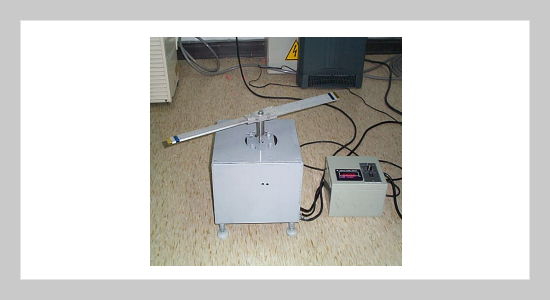REFERENCES
- [1] Azhdari, A. and Nemat-Nasser, S., “Experimental and computational study of fracturing in an anisotropic brittle solid.” Mechanics of Materials, Vol. 28, pp. 247-262 (1998).
- [2] Azhdari, A., Nemat-Nasser, S. and Rome, J. “Experimental observations and computational modeling of fracturing in an anisotropic brittle crystal (Sapphire).” Int. J. of Fracture, Vol. 94, pp. 251-266 (1998).
- [3] Bluhm, J. I., “A slice synthesis of a three dimensional work of fracture.” Engineering Fracture Mechanics, Vol. 7, pp. 593-604 (1975).
- [4] Erdogan, F. and Arin, K., “A Sandwich plane with a part-through and a deboneding crack.” Engng Fracture Mech, Vol. 4, pp. 449-458 (1972).
- [5] Griffith, A. A., “The theory of rupture.” Proceeding of the First Institutional Congress of Applied Mechanics., pp. 55-63 (1925).
- [6] He, C. J., “Development and Application of a Generalized Dynamic Wake Theory for Lifting Rotors,” Ph. D. Thesis, School of Aerospace Engineering, Georgia Institute of Technology, U. S. A. (1989).
- [7] He, M. Y. and Evans, A. G., “Three dimensional finite element analysis of chevron-notched, three-point and four-point bend specimens.” Fracture Mechanics: Twenty-Symposium., Vol. 1, pp. 26-28 (1990).
- [8] Hwu, C., Kao, C. J. and Chang, L. E., “Delamination fracture criteria for composite laminates.” J. Composite Materials, Vol. 29, pp. 1963-1987 (1995).
- [9] Jenkins, M. G., Kobayashi, A. S., White, K. W. and Bradt, R. C., “A 3-D finite element analysis of a chevron-notched, three-point bend fracture specimen for ceramic materials.” Int. J. of Fracture, Vol. 34, pp. 281-295 (1987).
- [10] Joch, J., Zemankova, J. and Kazda, J., “Analysis of a chevron-notched four-point-bend specimens by the three dimensional finite-element method.” J. of the American Ceramic Society, Vol. 71, pp. 154-155 (1988).
- [11] Karunamoorthy, S. N., “Use of Hierarchical Elastic Blade Equations and Automatic Trim for Helicopter Vibration Analysis”, Ph. D. Thesis, Washington University, U.S.A. (1985).
- [12] Kolhe, R., Hui, C. Y., and Zehnder, A. T., “Effect of finite notch width on the fracture of chevron-notched specimens.” Int. J. of Fracture, Vol. 94, pp. 189-198 (1998).
- [13] Munz, D., Bubsey, R. T. and Shannon Jr., J. L., “Fracture toughness determination of Al2O3 using four-point-bend specimens with straight-through and chevron notches.” J. of the American Ceramic Sociey, Vol. 63, pp. 300-305 (1980).
- [14] Newman Jr., J. C., “A review of chevronnotched fracture specimens,” Chevronnotched Specimens, Testing and Stress Analysis: a Symposium (ASTM STP 855), (Edited by W. W. Freiman, J. H. Underwood and F. I. Baratta) American Society for Testing and Materials, Philadelphia, pp. 5-31, U.S.A. (1984).
- [15] Nikishkov, G. P. and Atluri, S. N., “Calculation of fracture mechanics parameters for an arbitrary three-dimensional crack,” Int. J. Numbe. Methods Eng., Vol.24, pp. 1801-1802 (1987).
- [16] Pang, H. L. J. and Leggat, R. H. “Twodimensional test case in linear elastic fracture mechanics,” Report R0020. National Agency for Finite Element Method and standards, Glasgow, U. K. (1990).
- [17] Rice, J. R. and Sih, G. C., “Plane problem of crack in dissimilar media,” J. Appl. Mech, pp. 418-423 (1965).
- [18] Sakata, M., Aoki, S., Kishimoto, K., and Takagi, R., “Distribution of crack extension force, the J-integral, along a through-crack-front of a plane,” Int. J. of Fracture, Vol. 23, pp. 187-200 (1983).
- [19] Schmitt, W. and Siegete, D., “Application of finite-element method to fracture problems,” Int. J. of Computer Applications in Technology, Vol. 5, pp. 118-126 (1992).
- [20] Shih, C. F., Moran, B. and Nakamura, T., “Energy release rate along a three-dimensional crack front in a thermally stressed body,” Int. J. of Fracture, Vol. 30, pp. 79-102 (1986).
- [21] Sinclair, G. B., “Asymptotic singular eigenfunctions for the three-dimensional crack,” Proc. of the Seventh Canadian Congress of Applied Mechanics, Sherbrooke, Quebec, pp. 295-296 (1979).
- [22] Wang, S. S. and Choi, I., “The interface crack behavior in dissimilar anisotropic composites under mixed-mode loading,” J. Appl. Mech, Vol. 50, pp. 179-183 (1983).
- [23] Wang, S. S. and Choi, I., “The interface crack between dissimilar anisotropic composites,” J. Appl. Mech., Vol. 50, pp. 169-178 (1983).
- [24] Wang, S. S., “An analysis of delamination in angle-ply fiber-reinforced composites,” J. Appl. Mech., Vol. 47, pp. 64-70 (1980).
- [25] Wang, Y. R., “The Effect of Wake Dynamics on Rotor Eigenvalues in Forward Flight,” Ph. D. Thesis, School of Aerospace Engineering, Georgia Institute of Technology, U.S.A. (1992).
- [26] Wu, S. X., “Compliance and stress intensity factor of chevron-notched three point-bend specimen,” Chevron-notched Specimens, Testing and Stress Analysis: a Symposium (ASTM STP 855), (Edit by W. W. Freiman, J. H. Underwood and F. I. Baratta) American Society for Testing and Materials, Philadelphia, U.S.A., pp. 176-192 (1984).
- [27] Yeh, J. R., “Fracture mechanics of delamination in ARALL laminates,” Engng Fracture Mech., Vol.30, pp. 827-837 (1988).
















